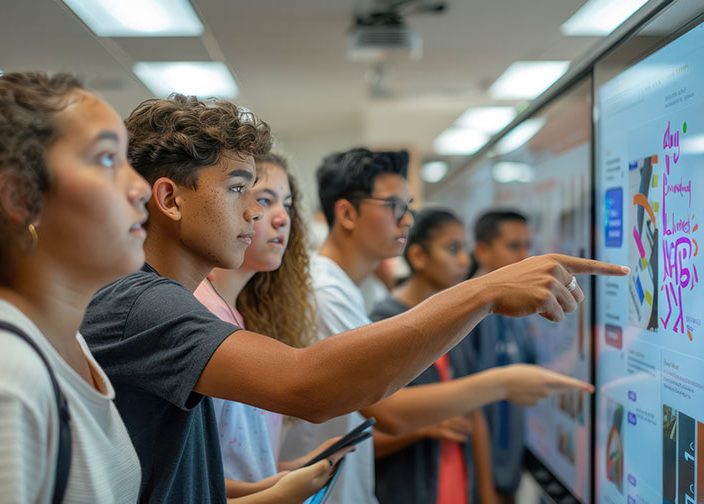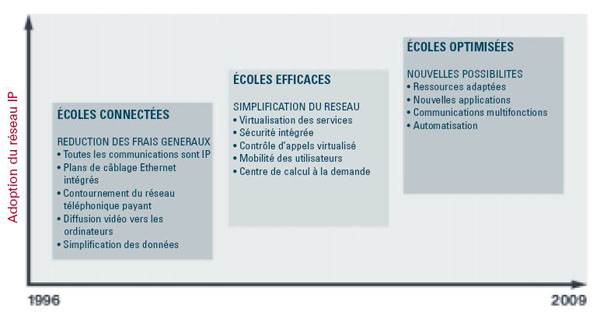What is videoconferencing these days?
Videoconferencing is not lacking in notoriety, whether among professionals or the general public.
Knowing what this technology is, however, is not enough to define it.
Here’s a brief overview of videoconferencing and its scope of application in 2015.
It’s everywhere, and there’s no shortage of fields of application in the years to come!
An attempt at "re-definition
Let’s look back at a brief definition of videoconferencing.
The term can be defined as a visual and auditory system that enables real-time, interactive oral communication.
Videophony, the technology that enables you to see and converse with your interlocutor, offers a number of different possibilities.
Point-to-point” is undoubtedly the closest to a telephone conversation: two sites are linked via video.
Multipoint” allows two or more people to take part in a videoconference via a meeting room, a computer (in the office or at home), a smartphone or a tablet.
The third option is broadcasting, giving other people access to a meeting via software rather than hardware.
Videoconferencing, web conferencing, telepresence - what are we talking about?

As the name suggests, web conferencing is based on the Internet, whereas videoconferencing is more akin to telephone conferencing.
Web conferencing is inexpensive and offers interesting features such as screen sharing and video recording.
On the other hand, this limited technology requires high bandwidth and does not guarantee online data security.
Independent of the IT system, videoconferencing offers superior audio and video quality for a potentially higher investment.
Telepresence is probably the ultimate in video exchange.
Rooms are set up to offer an incomparable sense of realism: participants are present in life-size at their actual location.
The material investment is logically more substantial.
Ultimately, videoconferencing is a term that can be used to describe a wide range of facilities.
Its many possibilities have led to significant growth in the professional world, but not only that. It is now becoming part of everyday usage, and is likely to dethrone other means of communication, truly establishing itself.
What does videoconferencing apply to?
Videoconferencing and education: the future is now!

Long regarded as an expensive and unhelpful system, videoconferencing is now revealing its full potential.
E-education is making the most of this audio and video technology: teachers, students and researchers can share their expertise with ease.
Reliable, high-quality technologies enable more exchanges between schools and learners (continuing education and language teaching, for example), and facilitate relations between schools and businesses.
Cisco, one of the world’s leading manufacturers, has invested heavily in knowledge distribution tools.
Its ambitions are considerable for schools, universities and education in general.
We can expect major transformations, which have become indispensable.

With Internet for everything, Cisco is going to take interaction with the world of education even further.
It’s the next generation, and it’s already happening!
Videoconferencing in the world of healthcare: a revolution in the making!
The healthcare sector has also benefited from the advent of videoconferencing.
At a time of increasing medical desertification outside urban centers, telemedicine is an unhoped-for solution for ensuring rapid access to care for all.
The quality of today’s audio and video exchanges is a real plus.
Seeing and hearing as clearly as in a face-to-face encounter is the best way to achieve a satisfactory diagnosis.
Conclusion: videoconferencing is a must in every field
As far as companies are concerned, videoconferencing is becoming the norm for interviews, saving considerable time and money.
Examples are multiplying in all fields: trials using video conferencing to avoid having to move a dangerous prisoner (appearance by videoconference), speeches by politicians, solo skippers exchanging views from their boat, and so on.

